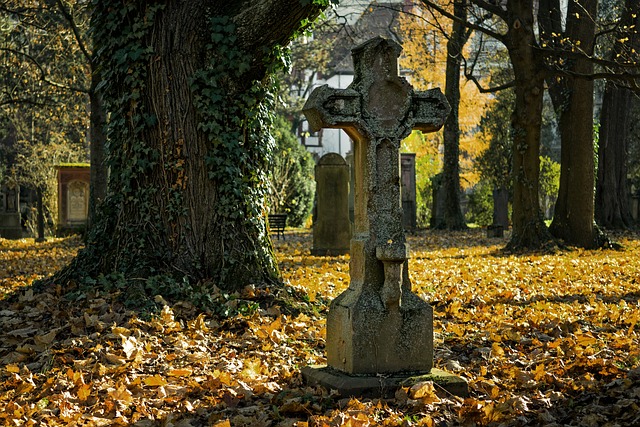National life expectancy has decreased for the second year in a row, according to new data released by the Centers for Disease Control and Prevention. Maryland’s life expectancy also fell, according to 2020 statistics from the state, which is the latest available data.
In 2021, the national life expectancy in the United States dropped to 76.1 years from 77 years in 2020. This, combined with a decrease from 2019 to 2020 when life expectancy declined by 1.8 years, was the biggest two-year decline in life expectancy since the early 1920s, according to the CDC.
The health organization attributed most of the decline to the COVID-19 pandemic. COVID-19 deaths made up nearly 74% of the decline from 2019 to 2020, and half of the decrease from 2020 to 2021, according to the CDC. The next highest cause was death by accident or injury, making up about 16% of the decrease in life expectancy from 2020 to 2021. Drug overdoses made up nearly half of that number.
In Maryland, life expectancy fell from 79.3 years in 2019 to 78.6 in 2020. The leading cause of death in the state was heart disease, followed by malignant neoplasms— also known as tumors– then COVID-19, according to the CDC. Heart disease was the third leading cause of death nationally. The last time life expectancy in Maryland dropped was in 2016, when it fell from 79.5 the year before to 79.1.
The latest available data from the Maryland Department of Health and the Census Bureau show large disparities in life expectancy correlated with race, gender and income inequality across the state.
Life expectancy isn’t distributed evenly across Maryland. There are pockets where life expectancy is higher than the state average of 78.6 years, particularly in Montgomery, Howard, and Frederick counties. Montgomery and Howard counties had the highest life expectancies, 84.2 and 82.7 years respectively. Baltimore City and Cecil County had the lowest, 71.8 and 75.1 years respectively.
White women in Montgomery County have the highest life expectancy of any demographic group measured in this report, 86.2 years. Black men in Baltimore City have the lowest life expectancy at 63.9. This is 0.8 years fewer than the average retirement age for men in 2021 according to the Center for Retirement Research and represents a difference of 22.3 years in life expectancy for people born in jurisdictions a little more than an hour drive away.
Life expectancy for Black men remains the lowest of the demographic groups measured in Maryland at 71.8 years compared to that of their white male counterparts, 77.1 years.
Only three counties had populations where the life expectancy of white women fell below the state average of 78.6 years (Allegany, Somerset, and Cecil). The life expectancy of Black women was below the state average in 11 counties.
The 2020 edition of the Vital Statistics report from the Maryland Department of Health, which has the most recent data, didn’t include life expectancy statistics for Asian or Pacific Islander, American Indian, or Hispanic populations.
Senior Fellow at The Brookings Institute Andre M. Perry said that the differences in life expectancies can be explain partially by racist historical policy and work by counties to improve quality of life (Photo courtesy of Perry)
The Brookings Institution released the Black Progress Index on Sept. 27, 2022, a model of data from U.S. counties to identify measures “that predict long and healthy lives for Black Americans,” according to an article by the organization.
“We highlight the areas where Black people have been living the longest because it may provide insight into the local civic actions that have produced those outcomes—actions that other places may take,” wrote the creators of the project, Andre M. Perry and Jonathan Rothwell.
The factors that had the most influence on life expectancy were “wealth, human and social capital (e.g., education, social networks, religion), environmental quality, safety, and family,” according to Perry and Rothwell’s article.
The Black Progress Index score estimates the life expectancy of a Black person based on 13 predictors including median household income, homeownership rate and educational attainment. Each factor either added to or subtracted from the estimated index score.
The Black Progress Index showed that in Baltimore City, gun violence decreased the life expectancy of Black residents by three years.
To Perry, the struggles the city is facing are a reflection of racist historical policies such as redlining.
Data from the Maryland Department of Health and the Census Bureau shows that higher median income often equates to a higher life expectancy for both Black and white people, however the correlation is stronger for white people.
The data about Black residents isn’t all bleak.
Black residents in Montgomery County had a higher life expectancy, 81.9 years, than the state average, according to data from the Maryland Department of Health from 2018 to 2020.
There are multiple counties where the life expectancy for Black people is high, Perry said.
“If there’s a Wakanda, it’s in the DMV,” Perry said.
Montgomery County ranked 17th among the top 20 U.S. counties with the highest Black Progress Index score. Factors that influenced this score included high levels of income, education rate and business ownership.
Perry and Rothwell said the greatest contributor to Montgomery County’s high life expectancy for Black residents is the large share of foreign-born Black adults. This factor surprised Perry during his research and is a topic that needs to be explored further.
“We don't talk about the positive contributions of black immigrants enough,” the Brookings fellow said. “What I would like to see is more about how black immigrants are interacting with black native-born folks and how that is having a positive impact on the community overall”
The data about Black residents isn’t all bleak.




Recent Comments